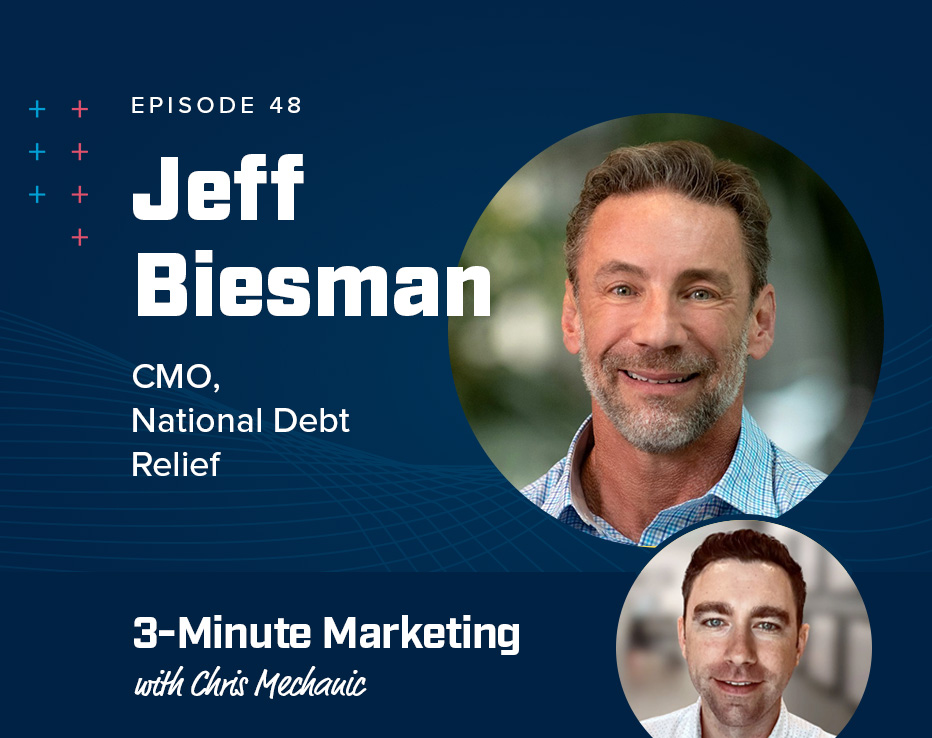
Your best brand ambassadors? Your employees
Most marketers have blinders on. They’re focused on running their marketing engine, moving the levers up and down to gain traction.
But they’re missing the forest for the trees. Their greatest brand ambassadors are right in front of them.
Anyone at a company can be a brand ambassador. The receptionist in your office, a sales leader, your head of supply chain — all those people are potential ambassadors.
No one knows this better than Scott Neuman, the current VP of corporate marketing at Calix. Scott cut his teeth at IBM and has held virtually every marketing leadership position imaginable in Europe and the Americas. And in every role, Scott cultivated a culture of storytelling among his peers and direct reports that put fuel on the branding fire.
On The Revenue-Driven CMO, he explained how to turn employees into prolific brand ambassadors, and we’re sharing some of his insights with you.
Why your employees?
How many times does someone ask what you do?
It’s probably a lot. You get that question at networking events, dinner parties, and even in line at your local coffee shop. And whenever you answer it, you become an extension of your brand.
Now, think about how often that happens to every person at your company.
In reality, employees already represent your brand in one way or another. So why not mold them into first-rate brand ambassadors?
6 Steps to enabling your brand ambassadors
Making sure everyone is equipped with something good, interesting, and memorable to say about your company is critical to keeping your brand alive and well. Here’s how to do it:
1. Identify the extroverts
Some people at your company will get genuinely excited about being a brand ambassador. It feeds their battery. That makes them the easiest to get on board. So actively seek them out.
Introverts may be less willing to help at first but might be convinced they see their peers doing (and enjoying!) it.
2. Give them a clear elevator pitch
Throughout millennia, people have explained tough concepts through stories. Prospects are pre-wired to follow a narrative, so your ambassadors need to be able to clearly and compellingly state your company’s purpose.
Telling people to be social without guidance is a recipe for confusion and noise. So, nail down your why.
Simon says that everyone at Calix knows they’re helping customers bridge the digital divide one community at a time. And they take pride in helping small towns, main streets, and school districts stay connected and thrive.
That’s it; that’s the elevator pitch. Keeping it short and sweet makes it easy for people to remember. Emphasize your message constantly to ensure everyone — from the CEO to the legal team to the janitor — knows it by heart.
3. Provide guide rails
Set up some rules, but don’t make them overcomplicated. Feel free to riff off of the guide rails at Calix:
- Don’t embarrass yourself
- Don’t embarrass Calix
- Don’t embarrass customers, prospects, and partners
Don’t make employees sign 12 pages of legalese before they post anything. That’s going to crush any chances of meaningful activity.
4. Teach them to engage
The last thing you want is to write copy for a social post and have 400 people share it without any additional comments or context.
That’s boring.
You want to provide them with a solid base post but then ask them to add some color. Explain how they can make it more relevant to them and their network; eventually, they’ll get the hang of it. Give some examples of great posts so they get the idea and can refer back to them when they’re getting nervous about posting their first one.
5. Reward them
Think of different types of recognition for people who participate in your brand ambassador program. Maybe every month, you call out the employee who:
- Posts the most on LinkedIn
- Tags your company the most on Instagram
- Talks to the most prospects at one of your conference booths
Calix has an award called “The Culture Giant” for people who go above and beyond, sharing the company story and the impact it’s had on them.
“We look for people sharing the culture internally or externally on social channels. The Culture Giants tell stories about their work-life balance or an exciting award or an assignment they are really jazzed about.”
And don’t forget about internal ambassadorship. Calix has another award for people who are contributing to company dialogue and strategy.
“We are a Chatter shop for Salesforce. If people are actively engaged in sharing ideas with others, we spot and celebrate them. We call it “The Chatter Giant.’”
Tip: Be fair about who you reward and when. Some ambassadors may go all out, posting all the time. You can certainly give them an award or two, but giving them the award every month will demotivate other employees who are just starting to dip their toes into the water.
6. Provide excellent content
A majority of your employees don’t have the time to think of social posts — you have to come up with the material for them. And it has to be good; otherwise, they won’t post it.
Customer success stories knock it out of the park nine times out of ten.
Reach out to your customers. Interview them, ask for photos, and write about them in a celebratory way. That makes it super easy for your employees to take it a step further and talk about how they were involved in the sale, implementation, or support.
And because the posts are so heartfelt, customers tend to weigh in, commenting and reposting to amplify your message to their networks.
Consider making 25-word, 50-word, and 75-word versions of your posts to give your employees some leeway.
Tip: Create a Customer Advisory Board or CAB. Your customers are an invaluable source of feedback, and getting them all together at once to talk about your project is a golden opportunity.
Calix has 8 CABs — some groups contain GMs and CEOs, and others are made up of engineers or support leaders. Each CAB represents a different core market segment and gives customers a platform for providing feedback, discussing their specific needs, and identifying your product’s strengths and weaknesses.
Gathering these opinions is not only a huge boon for your positioning; it shows your customers you’re listening and incorporating their feedback.
7. Measure the impact
As we all know, attribution is a beast.
But measuring engagement as a result of ambassador activity can show execs and employees just how important it is. Simon suggests using tools like Hootsuite Amplify to track ambassador progress:
“The nice thing about Amplify is you can link multiple channels, and we give people the option to toggle it on so that anything they do or say on LinkedIn, Twitter, or YouTube is a reflection directly on our brand. It will also help employees optimize their posts based on their network and timezone.”
Measuring ambassador activity can also help you identify the types of content that perform best. Besides looking at backend data, try sending short surveys to gauge interest in product updates versus events versus customer stories.
If your employees are your brand, your customers are the heroes
More B2B companies must put their customer at the center of their story. Too often, they talk about what they sell and how you can buy it, leaving customers wondering what the products or services actually do to solve their problems.
When customers share their experiences, they use the same language as their peers and provide the context they need to convert.
As Simon says, “Our philosophy is that what the market really cares about is not what we sell. The market cares about what we solve. And so how do show them you do that? You take yourself out of the hero role, and replace it with the customer.”
Combine that with your employee ambassadors, and you have an unstoppable marketing strategy.
Curious about how he got to where he is today? Listen to his full episode of The Revenue-Driven CMO to discover what inspired him, how he approaches team management, and how he beats burnout.
Eager to learn more about digital marketing? Register for our next monthly Growth Clinic, where you’ll hear about the latest and greatest digital marketing tips and their effects on your company’s growth.
Most newsletters suck...
So while we technically have to call this a daily newsletter so people know what it is, it's anything but.
You won't find any 'industry standards' or 'guru best practices' here - only the real stuff that actually moves the needle.







